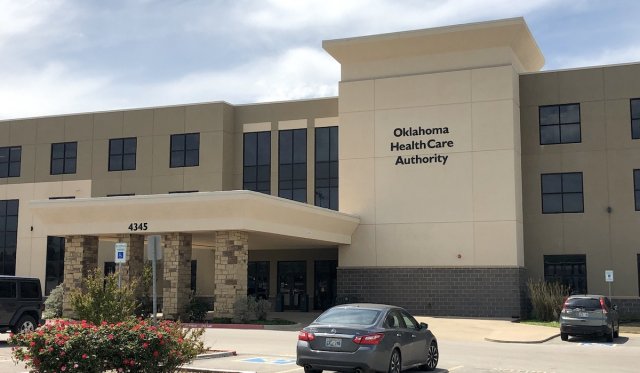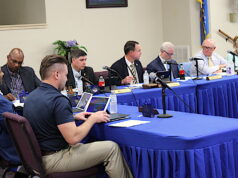

In an online information session this morning, the Oklahoma Health Care Authority unveiled the final version of Gov. Kevin Stitt’s SoonerCare 2.0 waiver application for an alternative version of Medicaid expansion.
The application, which seeks approval under the new Healthy Adult Opportunity program, will be submitted to the federal Centers for Medicare & Medicaid Services this afternoon, according to OCHA staff. The final version revealed today addresses a lingering question about the program’s intended implementation of managed care, a health care delivery arrangement intended to limit system costs. OHCA’s application specifies that the Medicaid expansion population would be covered under the agency’s existing managed-care program rather than any new contract with a third-party company.
Previous drafts of the application indicated the state intended to use managed care in its Medicaid expansion, but they had not committed to a particular mechanism.
The inclusion of managed care in SoonerCare 2.0 has been a point of contention between the governor and some members of the Legislature, but today’s clarification might ease concerns.
“I think the Legislature is much more comfortable with the Health Care Authority doing managed care than they are with an out-of-state, third-party company doing it,” said Sen. Greg McCortney (R-Ada), chairman of the Senate Health and Human Services Committee. “The Health Care Authority already does some managed care on a few of their populations and seems to do a pretty good job of it, so why we would pay an out-of-state company 10 percent to do something we already do internally is something I couldn’t figure out.”
McCortney said he had not reviewed the final application but was responding to information discussed in the OHCA briefing.
Traylor Rains, the deputy state Medicaid director who presented the revised waiver application, indicated that the Health Care Authority arrived at the internal managed-care approach in the course of this month’s public-comment period.
“If you attended any of our hearings, you probably heard this evolve, in that we are not intending to use a third party [managed care organization] to manage our SoonerCare 2.0 population,” Rains said. “But, rather, building on the success of our current patient-centered medical home, which is a program administered by the Health Care Authority. We’ll do that by expanding upon our current infrastructure with staff internally and incorporating other principles such as behavioral health integration.”
This change also affects the provider network accessible to those who will be covered by SoonerCare 2.0.
“Our original language had mentioned more third-party MCO contracting structures that can focus on a select group of providers,” Rains said. “When administered directly by the Health Care Authority, though, we cannot have a closed provider network but instead will contract with a network of healthcare providers by providing a strong emphasis on health outcomes and value-based compensation with those providers.”
According to Rains, the exclusion of third-party MCOs will also allow applicants for SoonerCare 2.0 to be covered as soon as they are approved and submit their first premium payment, another non-traditional component of Medicaid seeking approval in the state’s waiver. Previous versions of the waiver application anticipated a gap, sometimes spanning several weeks, between application and the start of coverage.
As detailed in the morning video-conference briefing, other changes to the application include adjustments to income brackets for premium payments and language reflecting various exemptions and provisions that apply to tribal nations.
Rains said the Health Care Authority had received several questions about whether the COVID-19 pandemic has affected the state’s projections for the number of people likely to enroll in SoonerCare 2.0, which goes into effect in July 2021. He said that the enrollment projections are currently unchanged.
Like McCortney, Rep. Marcus McEntire (R-Duncan) said he had not seen the final application, but he expressed concern about how the pandemic will increase the cost of Medicaid expansion, no matter which version Oklahoma ultimately implements.
“My concern is when we projected how much Medicaid expansion would cost, that was based on that historical unemployment data,” he said. “But now since unemployment is rising at an unprecedented rate, the price for Medicaid expansion is getting more expensive.”
Several provisions that have been the subject of controversy and discussion remain unchanged. Those include a “community engagement” requirement for coverage, prescription coverage, and the Notification of Date of Service process.
The waiver, if approved, allows the state to expand the population covered by Medicaid and to implement requirements and processes that do not apply to those covered by the standard Medicaid program.
The public comment period for the application closed on April 15. It included four public meetings, attended by a total of 640 people, Rains said. The Health Care Authority also received 2,000 emails about the plan.
On Friday, April 17, Stitt announced that State Question 802, which presents a competing plan for Medicaid expansion, will appear on the June 30 primary ballot. SQ 802 would write the expansion into the Oklahoma Constitution, thus superseding SoonerCare 2.0, and would prohibit additional restrictions or requirements for the expansion population.
Read the SoonerCare 2.0 waiver application
(Update: This story was updated at 5:15 p.m. Friday, April 20, to include a link to the application as it was submitted to CMS.)




















